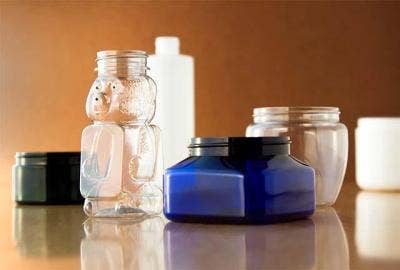Different Types of Product Packaging 
As a leading supplier of packaging and a longstanding leader in the packaging industry, we know firsthand just how many different kinds of packaging there are to choose from. While TricorBraun is focused on rigid packaging, we wanted to shed some light on other types of packaging that you could choose for your brand or product.
There is an assortment of packaging options and their uses can vary drastically. The product’s weight, shape, size, and end usage will determine what your best option will be. This article will go over some of the most popular, different types of product packaging and explain the advantages and disadvantages of each.
Which type of packaging works best for you?
There are a multitude of factors to consider when it comes to picking out the packaging for your products. Here are some factors to consider for your packaging: how customizable you want your packaging to be, how expensive it is, which packaging best suits a product. We’ll discuss the composition of the materials for each style of packaging.
What Are Some of the Different Kinds of Packaging?
Deciding on the right packaging design or type can be a challenge for companies launching a new product. The following packaging types have multiple variants and this article will go over some of the most popular, broader categories of packaging types. We will start by going over Bottles and Jars, Corrugated Boxes, Paperboard, and Metal Cans.
Bottles and Jars

There is a wide assortment of uses for bottles and jars, including a wide variety of food packaging and food product applications. Bottles are great for drinks, cleaning products, cosmetics, and other liquids. Jars have many similar uses as well as being good for solid objects and food items like snacks or candy.
Unlike other packaging, bottles and jars are meant to be reusable over a longer period of time. Being able to increase a product’s shelf life by putting a closure back on and placing the package back in the fridge or in a cabinet is an advantage to many companies.
Bottles and jars can also be fully customizable by design. The options are limitless when you go this route. Check out TricorBraun’s Design & Engineering page for more information. Stock options can be great for startups due to how inexpensive they are compared to their custom counterparts.
The applications for bottle and jar use are endless! Depending on the product sizes of bottles and jars can be seen as a disadvantage. A majority of bottles and jars are made of plastic but are also made of glass or metal.
Corrugated Boxes

The most widely used common packaging type in the United States is corrugated boxes, used to ship everything from large kitchen appliances to fruits and vegetables. The different layers of paper fiber give corrugated boxes the strength to stand up to all their uses.
The top and bottom layers are called linerboard. The middle layer is called the corrugating medium (that’s where the name comes from). The wave-like ship of the medium gives the box much of its strength. Beyond shipping corrugated, board can be used to make products including furniture, insulation, and pallets.
Paperboard Boxes

Paperboard is a paper-based substrate that is very light, yet sturdy. It can be easily manipulated or cut to create shapes and structures that are custom by design. These features make it perfect to be used in tailor-made packaging. It is made by taking fibrous materials that come from wood or from recycled waste paper into pulp, and then bleaching it.
Paperboard packaging comes in quite a few different grades, each suitable for different packaging solutions. They are customizable in their shape, size, and what appears on the boxes in terms of design. Paperboard can be inexpensive when purchased in bulk and is popular for shoeboxes, donut boxes, cereal boxes, and packaging for toys.
Metal Cans

Some of your favorite drinks come in the form of metal cans, specifically aluminum cans. Did you know Coors was the first company to use aluminum cans in 1959? Cans are great for packaging carbonated drinks like soda or for sparkling water. Metal cans are very good at being sealed, making them strong packaging options for keeping paint from drying and keeping food unspoiled for years longer than using plastic containers.
Cans are also very environmentally friendly. They are often recycled and made of recycled materials making them a good option from an environmental standpoint but are not as inexpensive as plastics are. Aluminum cans are, without a doubt, the most recycled beverage container. The average can contain 70 percent recycled metal!
While TricorBraun focuses on rigid packaging such as bottles and jars, we wanted to take an opportunity to explain the pros and cons of some of the other types of product packaging materials that are available to you as a brand. On top of classic bottles and jars, you can put your next product in Corrugated Boxes, Paperboard, and Metal Cans. Have questions about finding the perfect packaging solution? Contact us today.
TALK TO A PACKAGING CONSULTANT
Whether you’re looking for a stock package or a groundbreaking custom design, TricorBraun’s proven process will guide your packaging decisions from napkin sketch all the way to the retail shelf.



